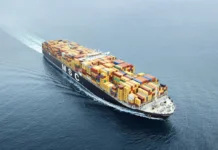
The disparity in the fleet sizes of the 10 largest container carriers and their smaller rivals is now at an all-time high, according to Alphaliner’s latest report released on 17 August.
Currently, market leader MSC has a fleet of 4.48 million TEU, compared with 20th ranked SM Line’s 93,410 TEU, working out to a gap of 4.38 million TEU.
Back in 2017, when Maersk Line was the market leader, the gap between the Danish company and the 20th box line was 3.2 million TEU.
The figures show how much the largest liner operators have expanded their fleet size as their earnings rocketed over the past two years. As of mid-August, the top 10 carriers were operating 21.8 million TEU of capacity, while the next 20 carriers (rankings 11-30) were operating 2.5 million TEU.
Alphaliner said, “Following widespread consolidation at the top of the table – consolidation that has attracted the attention of politicians and regulators – there is now a large gap between the leading carriers and the rest of the container field.”
The number of mainline operators having more than 1 million TEU has risen from six to seven in the last five years, because Japan’s Big Three carriers, Mitsui OSK Lines, NYK Line and ‘K’ Line amalgamated their container businesses to form Ocean Network Express (ONE).
Despite the difference in fleet sizes, Alphaliner observed that the earnings of carriers offering Transpacific services have significantly outperformed those of liner operators focusing on domestic/regional trades. US-listed Matson Navigation and South Korea’s SM Line have been the main winners since 2019 in terms of increased operating profits.
Matson achieved an operating profit of US$1.14 billion in 2021, an all-time high in its history and nearly a five-fold increase from 2020, while SM Line, which was in the red in the first two years of its business, booked an operating profit of US$822 million in 2021, a nine-fold increase from 2020.
SM Line operates 94% of its capacity on the Transpacific, the highest proportion of the top 20 carriers. The results contrast with other small and medium-sized carriers which are mainly focusing on niche trades. Earnings growth for China’s largest domestic operator Zhonggu Logistics, for example, has been modest. Zhonggu’s operating profit of US$505.17 million in 2021, was just over double that in 2020.
Martina Li
Asia Correspondent





